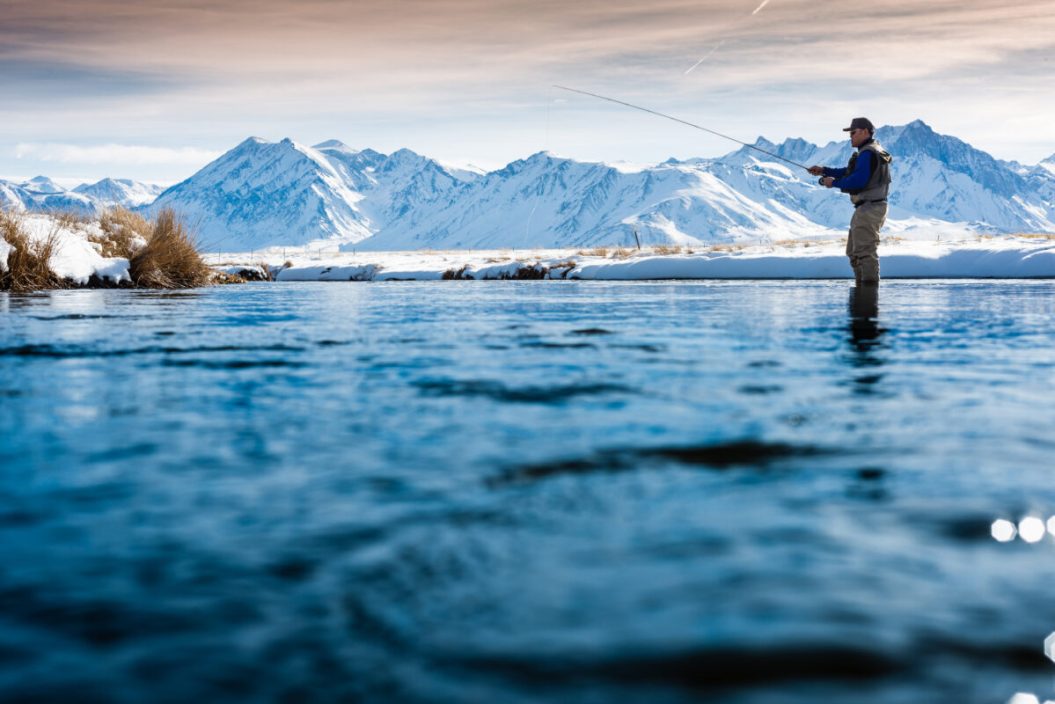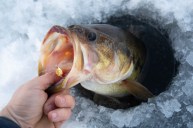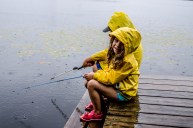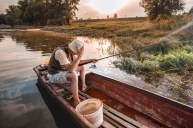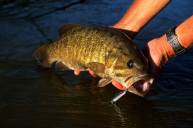Bass fishing is a good time all year—even when the weather isn't very inviting. Bass fishing in cold weather, like during the winter or early spring, is a whole different animal to warm-weather fishing. But you will need to change up your strategy to entice the slower-moving fish and keep yourself happy out there.
1. Slow Down
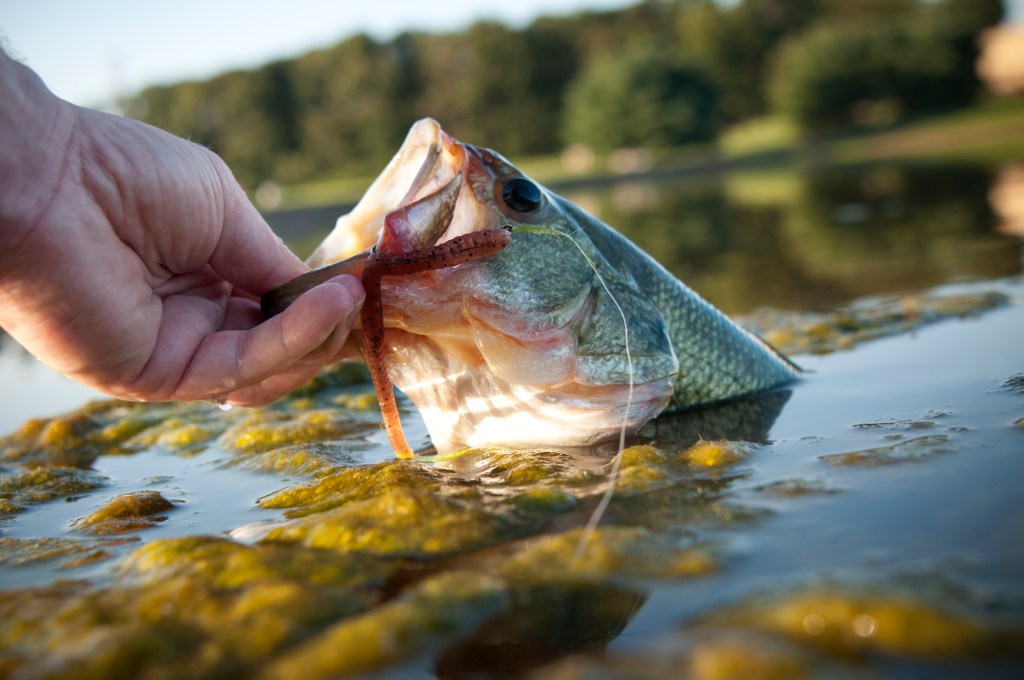
Getty Images, MichaelSvoboda
Bass are cold-blooded, meaning their body temperatures are regulated by external surroundings. When the water temperature dips, bass slow down. Baitfish also change their movement and behaviors in cold water. That means anglers can't use the same methods to catch bass in 50 degree water that they would use in 80 degree water.
This is a time for subtlety: Presentations should mimic lethargic baitfish to draw strikes from lethargic bass. Think of your retrieves in the context of minutes rather than seconds. Suspending jerkbaits, drop shot rigs, and heavy football jigs are great presentations for staying in the strike zone.
Make long casts with the jerkbait and rip it the first few feet to give it some depth. Then let it sit. Twitch it, then let it sit a little longer. When you think it's time to twitch it again, wait twice as long to do it. Keep multiplying that time frame between twitches until you start getting bites, even if you have to let the bait suspend for well over a minute or two between moving it at all. Bass in cold water are not lively and do not want to exert a lot of effort for meals.
Fish your dropshot in a similar manner. Allow the weight to sit stationary on the bottom. Control the movement of your bait by drawing enough tension in the line to draw the bait upward, then give it just enough slack to allow the bait to fall a few inches, then draw it tight again in the same spot without dragging the weight or pulling it off the bottom. Continue doing this with the same long pauses between movements.
A heavy football jig will also stay in place better than other jighead styles, plus the added weight will allow you to tap the bottom, rather than jigging it vertically to grab attention. The vibration of the jighead tapping the bottom is picked up in a bass's lateral line. Try to keep the jig close to the bottom so it stays in the strike zone and taps the bottom without moving too far from the fish. Continue doing this with the same long pauses between movements.
2. Fish the Warmest Water, Cover, and Structure
Bass will flock to the warmest water spots. The clay or mud at the bottom holds the heat from the sunlight. Shallow coves that receive enough sunlight will warm faster and retain the heat better than deeper water, where the temperatures are more consistent. Boulders or a dark colored bottom in clear, shallow water can absorb heat from the sun.
Look for tributary runoffs that meet the main water body, shallow muddy-bottom spots on sunshiny days, and, on lakes, the northern side which often holds more heat on a bright sunny day.
Bass also tend to hold tighter to cover in cold weather—think: flooded timber, rock ledges, and weedlines. Spots with heavy vegetation will have a higher concentration of oxygen in the water, which can attract fish in cold weather conditions, according to freshwater fishing guide Debbie Hanson.
3. Use Cold Weather Colors In Your Bait
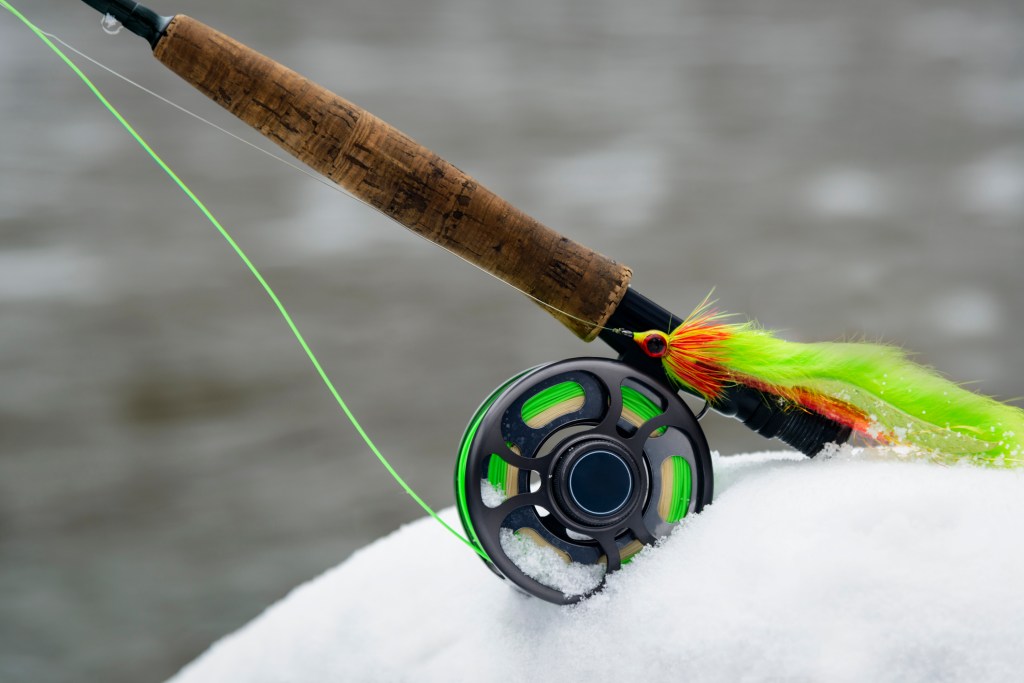
Getty Images, doug4537
Natural bait is also different in the winter. The best baits for spring bass are going to be natural tones for clear water and, in dingy water, white and chartreuse spinnerbaits with copper or brass blades are worth a try.
Muddy murky water makes it a little more difficult for bass to hone in on their targets. Using darker colors like black, blue, or purple will give the bass a silhouette to focus on. Darker-colored jigs worked around rocks, drug over weed-beds or pitched into cover can be effective when there's less visibility. Adding sound to your bait will also help the fish locate it.
4. Be Prepared For Different Weather Conditions
The weather can change fast in the winter and spring, so you want to layer up accordingly. Skip the cumbersome and too-warm puffy jackets, which will be uncomfortable as soon as the sun pops out. Instead, wear a base layer, mid layer, and, depending on the weather, have rain-gear on-board. Wear materials that repel water or dry quickly. Choose synthetic fabrics, fleece, or wool over cotton shirts and denim jeans.
Remember, weather prep goes beyond just your clothing: If lightning rolls in, being the tallest point on the water with a graphite rod in the air is asking for trouble.
NEXT: FRESHWATER FISH HAVE EXTREMELY UNSAFE 'FOREVER CHEMICAL' PFA LEVELS, NEW STUDY REVEALS
